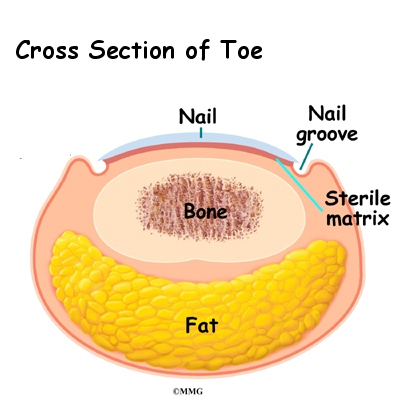
One chief cause for developing toenail is wearing tight-fitting shoes or shoes with high heels that keep the toes compressed and induces the toenail to grow awkwardly. Improper trimming of toenails can also prompt the corners of the nail to dig into the skin. Nails should be trimmed straight across and not rounded. Fungal infections of the nail are said to cause an erratic toenail to develop. Ingrown toe nails are also hereditary and if a member of your family has an ingrown toenail, then you are more likely to develop one too. The most common signs and symptoms of ingrown toenails are pain, redness, and swelling at the corner of a toenail. Fortunately there will be no pus formation and although the affected area may appear warm, there is no likelihood of the patient developing fever.
When you notice inflammation and know that an ingrown toenail is developing and there is no relief even after two days of home treatment, it is advisable to consult a doctor without delay. If you are a diabetic, have poor circulation, or have another reason for poor healing then you are prone to increased risk of infection and immediate medical attention becomes all the more imperative. The doctor will decide if an infection is present or not and what extent of treatment is necessary. A physical exam by the doctor will include checking temperature, blood pressure a detailed examination of the foot, toenail, and quite often an x-ray of the foot. Blood tests may be performed if you have a severe infection or if you are a diabetic. If no serious infection is found, then the nail will be suitably elevated and certain traditional methods of treatment should suffice. If an infection is present, then surgical removal of the nail and draining of the abscess will become unavoidable. The extent of the surgical procedur e will depend on the severity of the infection and other health conditions. The surgeon may destroy some of the cells that make the nail grow back by applying a chemical to the skin under the nail or removing a part of the nail bed. This is done as a permanent remedy to ensure the edge of the nail that caused the problem does not return. The toe usually heals well after this procedure. The primary concern is whether the nail will become ingrown again, which can occur, though very rarely, even after destruction of the nail-growing cells. There is no need to worry if part of the toenail is surgically removed as it will grow back within 12 months.
No comments:
Post a Comment